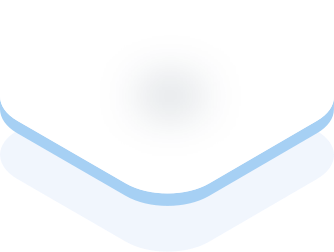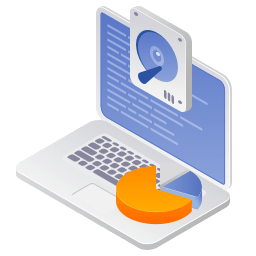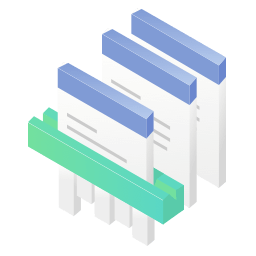PAGE CONTENT:
Time Machine is Apple's default backup solution for macOS, providing an easy and reliable way to back up and restore files. It allows users to restore previous versions of files, recover lost data, or even revert their entire system to an earlier state. One of the most convenient ways to access Time Machine is through its menu bar icon, which provides quick access to backup status, manual backups, and restoration options.
However, sometimes the Time Machine icon may disappear from the menu bar, leaving users unable to monitor backup activity or initiate backups manually. This issue can be caused by system updates, accidental changes in settings, software glitches, or even third-party applications interfering with macOS processes.
If you've noticed that the Time Machine icon is missing from your Apple menu bar, don't worry - there are several ways to restore it. In this guide, we'll walk you through step-by-step solutions to fix the issue and get the Time Machine icon back where it belongs.
![]()
How to Fix Can't Find Time Machine Icon on Apple Menu Bar?
1. Check Time Machine Settings
Before diving into more complex troubleshooting, the first step is to ensure that Time Machine is properly enabled and that the option to display its icon in the menu bar is selected.
For macOS Ventura and Later:
- Open System Settings: In the upper-left corner, click the Apple menu and choose System Settings.
- Move to Time Machine: Choose General, Scroll down the right sidebar and click on Time Machine.
![Move to Time Machine]()
- Check Time Machine Icon on Menu Bar: Check if you can see the Time Machine icon on Apple menu bar. If you can't see it, quit other app's icon, then check if you can see the Time Machine icon.
- Check for Backup Disk: Ensure that a backup disk is selected and that Time Machine is functioning correctly.
For macOS Monterey and Earlier:
- Open System Preferences: Select System Preferences by clicking on the Apple menu.
- Go to Time Machine: Find and click on Time Machine.
![Find and click on Time Machine]()
- Enable the Menu Bar Icon:
- Check the box that says "Show Time Machine in menu bar".
![Enable the Menu Bar Icon]()
- If the option is already checked, uncheck it and then check it again.
- Check the box that says "Show Time Machine in menu bar".
If the icon reappears, the issue was likely a minor settings glitch. If not, proceed to the next troubleshooting step.
2. Restart Finder or macOS
Sometimes, the Time Machine icon may disappear due to a minor Finder or system glitch. Restarting Finder or your Mac can help restore the menu bar icon.
Restart Finder:
- The Force Quit Applications window will open when you press Command (⌘) + Option (⌥) + Esc.
- Select Finder from the list.
- Click Relaunch, then check if the Time Machine icon reappears.
![Restart Finder]()
Alternatively, you can restart Finder using Terminal:
- Open Terminal from Utilities via Applications.
![Open Terminal from Utilities via Applications]()
- Type the below command and press Enter:
killall Finder
![killall Finder]()
- Wait for Finder to restart and check if the Time Machine icon is restored.
Restart macOS:
If restarting Finder doesn't work, a full system reboot may help:
- Choose Restart from the Apple menu.
![Restart macOS]()
- Once your Mac boots up again, check the menu bar for the Time Machine icon.
Mac won't shut down? Check how to force shut down or restart Mac >>
3. Add the Time Machine Icon Manually
If the previous methods didn't restore the Time Machine icon, you can try adding it manually through macOS settings.
For macOS Ventura and Later
- Open System Settings from the Apple menu ().
- Click Control Center in the sidebar.
- Scroll down and look for Time Machine.
- If the option exists, enable it for the menu bar.
![Add the Time Machine Icon Manually]()
For macOS Monterey and Earlier
- Go to System Preferences > Time Machine.
- Enable the Show Time Machine in menu bar checkbox.
4. Check for macOS Updates
Apple frequently releases macOS updates that fix system glitches, including menu bar issues. If your system is outdated, updating macOS might resolve the problem.
How to Check for Updates
- Select System Preferences or System Settings by clicking the Apple menu.
- Select Software Update.
- If an update is available, click Update Now and follow the on-screen instructions.
![Check for macOS Updates]()
- Restart your Mac after the update and check if the Time Machine icon is back.
5. Reset macOS Menu Bar Settings
If the Time Machine icon is still missing despite checking preferences and restarting Finder or macOS, the next step is to reset the menu bar settings. This process clears any customizations or corrupt settings that may be preventing the Time Machine icon from appearing.
Understand macOS Menu Bar Settings
The macOS menu bar stores preferences for system icons such as Wi-Fi, Bluetooth, Sound, and Time Machine. These settings are controlled by the SystemUIServer process, which manages how system icons appear and behave. If the Time Machine icon is missing, it's possible that:
- The preference file for system icons has been corrupted.
- A recent macOS update changed or reset menu bar settings.
- A third-party app modified or removed system icons.
Resetting these settings will restore all menu bar icons to their default state, allowing Time Machine to reappear if it was previously hidden.
Method 1: Resetting the Menu Bar Using Terminal
- Open Terminal
- In the Dock, click the Finder icon.
- Move to Terminal from Utilities via Applications and open it.
- Run the Reset Command
- Type the following command and press Enter:
defaults delete com.apple.systemuiserver menuExtras
- This command deletes the stored settings for menu bar icons.
- Type the following command and press Enter:
- Restart the SystemUIServer Process
- After running the above command, restart the menu bar service by entering:
killall SystemUIServer
- The menu bar will briefly disappear and then reload.
- After running the above command, restart the menu bar service by entering:
- Check for the Time Machine Icon
- If it does not appear, go to System Settings > Control Center (macOS Ventura & later) or System Preferences > Time Machine (macOS Monterey & earlier) and manually re-enable it.
Method 2: Reset NVRAM/PRAM (For Persistent Issues)
If resetting the menu bar via Terminal does not resolve the issue, resetting the NVRAM or PRAM might help. These memory components store various system settings, including display preferences and menu bar settings.
How to Reset NVRAM/PRAM
- Turn Off Your Mac
- Choose Shut Down from the Apple menu.
- Turn On Your Mac and Hold the Key Combination
- Press the Power button and hold it down right away: Command (⌘) + Option (⌥) + P + R
- Hold these keys for approximately 20 seconds.
- If your Mac plays a startup chime, release the keys after the second chime.
- Check the Menu Bar
- Once macOS boots up, check if the Time Machine icon has reappeared.
Method 3: Create a New User Profile (For Corrupt User Accounts)
If the Time Machine icon is still missing after resetting menu bar settings and NVRAM, the issue may be linked to your user profile. A corrupt user account can cause system glitches, including missing menu bar icons.
How to Test with a New User Account
- Go to System Settings (Ventura & Later) or System Preferences (Monterey & Earlier)
- Open System Settings (or System Preferences).
- Navigate to Users & Groups.
- Create a New User Account
- Click Add User (+).
- Choose Administrator as the account type.
- Set up a username and password.
- Log in to the New Account
- Log into the new account after logging out of the old one.
- Verify whether the Time Machine icon is visible in the menu bar.
- If the Icon Appears:
- The issue is specific to your original user account.
- You may need to back up your files and migrate to the new account.
6. Checking for Third-Party Apps Interfering with the Menu Bar
Some third-party applications, such as menu bar management tools (e.g., Bartender, iStat Menus), can override or hide system icons.
How to Check and Disable Third-Party Apps:
- Open System Settings > General > Login Items (or System Preferences > Users & Groups > Login Items on older macOS versions).
![How to Check and Disable Third-Party Apps]()
- Look for any menu bar management apps.
- Disable them and restart your Mac to see if the Time Machine icon returns.
![How to Check and Disable Third-Party Apps]()
If a third-party app was the issue, configure its settings to allow the Time Machine icon to be visible.
7. Alternative Ways to Access Time Machine
If you're unable to restore the menu bar icon, you can still access Time Machine through other methods:
Using Spotlight Search
- Press Command (⌘) + Space to open Spotlight.
- Type Time Machine and press Enter to launch it.
Using System Settings/System Preferences
- Open System Settings (macOS Ventura & later) or System Preferences (macOS Monterey & earlier).
- Click on Time Machine to manage backups manually.
Using the Finder Sidebar
- Open Finder and check if Time Machine is listed under Locations.
- If not, go to Finder > Settings > Sidebar and enable Time Machine under Locations.
Conclusion
Losing the Time Machine icon from the menu bar can be frustrating, but in most cases, it's a simple fix. Whether it's a settings change, a macOS glitch, or interference from a third-party app, the solutions outlined above should help you restore the icon.
If none of these methods work, you may need to reset your Mac's settings using NVRAM/PRAM reset or contact Apple Support for further assistance.
By keeping your system updated and periodically checking settings, you can ensure that Time Machine remains easily accessible, providing peace of mind with seamless backups.
If Time Machine won't complete the backup, you can use disk cloning software, such as Donemax Disk Clone for Mac to create a bootable clone for your Mac.

Donemax Disk Clone for Mac
An award-winning disk cloning program to help Mac users clone HDD/SSD/external device. It also can create full bootable clone backup for Macs.
Related Articles
- Mar 29, 2024How to Fix Broken External Hard Drive?
- Feb 05, 2025Fix GoPro SD Card Error: A Complete Troubleshooting Guide
- Jun 02, 2024Can't See C Drive in File Explorer, Fix It Without Losing Data
- Feb 08, 2025Fix 'APFS Volume/Container Superblock is Invalid' Error on Mac
- Dec 24, 20249 Solutions to Fix Mac Internal Drive Won't Boot
- Nov 21, 2024(Solved) Can't Change Permissions on External Drive on Mac

Lucien
Lucien is a writer and a chief programmer of Donemax software who has worked in the company for 5+ years. He has written much of the content on the site and devotes to providing troubleshooting and solution for Windows and Mac users including disk cloning, data recovery, migration, eraser, error fixes.

Gerhard Chou
In order to effectively solve the problems for our customers, every article and troubleshooting solution published on our website has been strictly tested and practiced. Our editors love researching and using computers and testing software, and are willing to help computer users with their problems
Hot Donemax Products

Clone hard drive with advanced clone technology or create bootable clone for Windows/Mac OS.

Completely and easily recover deleted, formatted, hidden or lost files from hard drive and external storage device.

Certified data erasure software - permanently erase data before selling or donating your disk or any digital device.